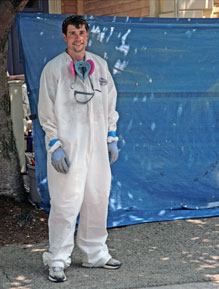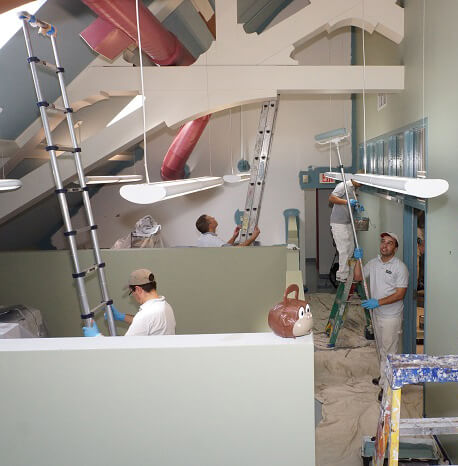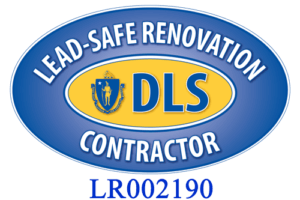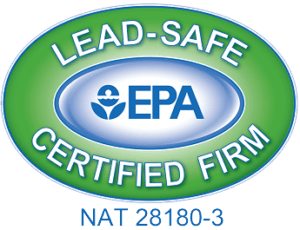 Each month seems to bring a new EPA clarification on how we are supposed to implement the RRP protocols while working on homes coated in lead-based paint.
Each month seems to bring a new EPA clarification on how we are supposed to implement the RRP protocols while working on homes coated in lead-based paint.
 The article below introduces a new wrinkle, arguing that the current 10 foot rule is still inadequate in keeping dust and debris from leaving surface protection. We’ve certainly found this to be an issue; the slightest breeze will violate the 10 foot rule so we have been using walls for a while.
The article below introduces a new wrinkle, arguing that the current 10 foot rule is still inadequate in keeping dust and debris from leaving surface protection. We’ve certainly found this to be an issue; the slightest breeze will violate the 10 foot rule so we have been using walls for a while.
This is especially important when painting in the more densely populated areas of Boston. Prepping a 2nd floor window over a sidewalk brings its own challenges, as we try to avoid sidewalk closure, police details and permits, all of which hike the price of our project.
We’ve begun working ‘wet’ whenever possible; this means wetting surfaces to minimize or eliminate dust. But we also rely on the use of chemical paint strippers to convert paint to paste, then remove it with steel wool. The wool captures all the material and is cheap and lightweight. Keeping the coating in paste form and moving to finer and finer steel wool replaces sandpaper.
The added benefit is the elimination of the airborne lead hazard for our employees; they wear HEPA respirators, gloves and eye protection regardless.
Working hard, but working smart.
The New Norm for Exterior Vertical Containment
John H. Jervis, Senior Contributing Editor
For RenovationPros.com
While the industry has escaped the requirement of dust sampling and clearance, EPA’s July 15 announcement included more specific language on vertical containment requirements for exterior projects, specifically stating that vertical containment is now required for exterior renovation projects that are covered by the rule and that affect painted surfaces within 10 feet of the property line.
In such cases, vertical containment is necessary to ensure that adjacent buildings or properties are not contaminated by leaded dust or debris generated by the renovation. EPA’s Dust Study demonstrates that leaded dust and debris from exterior renovations can be found 10 feet away from activities disturbing leaded paint, even if no prohibited or restricted practices are used.
The RRP rule further states, at 40 CFR 745.85(a)(2)(ii)(D), that, in certain situations, the renovation firm must take extra precautions in containing the work area to ensure that dust and debris from the renovation does not migrate to adjacent properties.
EPA’s decision is based on their admission that they know of no work practice, other than a system of vertical containment or equivalent extra precautions in containing the work area, that would universally and effectively prevent the migration of dust and debris from renovations performed within 10 feet of the property line to adjacent properties.
This requirement is intended to provide flexibility for certified renovators to design effective containment systems based on the renovation activity and the work site. Effective work area containment can span a range from simple barriers to more extensive scaffolding, depending on the size of the job and other relevant factors.



